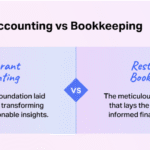The Goo Goo guide is a year long series released monthly written by Jennifer Chen-Su Huang. The Goo Goo Guide follows Jennifer during a year long artist residency in Taiwan through a Fulbright Scholarship. Join us as we follow Jennifer on her journey! The series is released through our Quarterly issues from Autumn 2017-2018, subscribe below for monthly reminders to read the Goo Goo Guide!
Another month passes so quickly and yet the weather remains the same. Today it is 30 degrees (Celsius, or in the 80s Fahrenheit) — the warm breeze entirely unexpected as it turns December.
To be honest, I haven’t thought about art since I’ve gotten here, at least, not in the way that I was trained to think of my work during my MFA program. No longer preparing for critiques, but rather pouring my energy into these new relationships, with the Atayal women weaving in Wulai, with the Sediq women holding weekend workshops at National Taiwan University, with the Han professors introducing me to these indigenous communities, and with my peers at my host institution, National Chengchi University, and at National Taiwan University. It has been a whirlwind — feeling vulnerable, a little stupid and incoherent. But the Chinese classes are slowly but surely taking effect. Character by character, I am learning how to decode the language that surrounds me.
In “Cultural identity and diaspora,” Stuart Hall writes, “Perhaps instead of thinking of identity as an already accomplished fact… we should think, instead, of identity as a ‘production’ which is never complete, always in process, and always constructed within, not outside, representation.”
And while I am not thinking of the production of art right now (though there is certainly pressure to, as I have an upcoming exhibition this month), I am thinking of the production of identity; those of the indigenous, the Han, the expats in Taiwan. How do we come to understand ourselves, define ourselves, perform ourselves?
Fashion, how we choose to accessorize our bodies, is an obvious answer, and what I first turned to when I was younger, sewing, knitting, and crocheting my own clothes throughout high school and college. But somewhere along the way, I abandoned functionality for poetics for better or worse. It pains me that my Western-trained brain and Western-biased art world has taught me to reject representation, the kind I see in the brochures shared with me from Taiwanese indigenous art exhibitions. The contemporary art, paintings of men and women in traditional clothing rendered in bold Warholian colors, disappoint me, and when my father asks me why, my half-formulated response is it’s too illustrative, representational. And I add, I prefer the traditional works — traditional, traditional, traditional, but who am I to stifle the creative energy of the new generation of indigenous artists who want to paint photorealistically? Indigenous today is not hunting and weaving and practicing animism. In Taiwan, it is largely Christian rather than animistic. Identity continually evolves and adapts. These minority groups must be given the autonomy to direct their culture, their lifestyle as they see best. And I must withhold my judgement.
I am acutely aware of the art school elitism in my attitude and I wonder if art as we know it, the work commemorated in our maleousum art museums excludes. I recall one field trip as a kid, maybe 10 or 12 years old, to the art museum — when I stood in awe of early abstract expressionist paintings, my friend cringed, noting how easily she could re-create it. Having never witnessed art like this, I felt it was fascinating, progressive and, she felt it was defiant and crude. I recall this experience to defend art from its exclusionary accusations, to remember that for me, it was mind-opening and delightful to behold such humanity. But could it be, that art is not for everyone? The idealist in me laments this and rejects such notions.
In Taiwan, I am trying not to forget the feelings of gratefulness and warmth; these words barely do the feelings justice. I guess what I’m trying to say is that even amongst strangers, I can feel a kind of closeness. It happens sometimes when watching live music or dance or a moving film or engrossing book — maybe when you feel the threads of a common dwelling place reverberating within your being. Does this make sense?
I feel it with my Atayal weaving teacher, Sayun. Just a deep well of gratitude. Every week, I bring my loom on subway and bus, across a high pedestrian bridge and up the mountain to her doorstep. She tells me about her family, her history, her church, her children, her grandchildren. As she recounts her stories, she imparts her mother’s knowledge to me — how to more quickly (though still slow) wind thread onto the warping board, haptic secrets to keeping that selvedge edge straight. The patterns we recreate are the same tattoos once imprinted onto men’s chin and foreheads, earned only after they’ve hunted a head. Layer by layer, like the threads I wind onto the warping posts, I feel our growing familiarity.
It was not always like this. I was once a foreigner, and she was busy, too busy to teach me. Defeated, I would wait a week. Learning to embrace my American abrasiveness, I’d ask again in my broken Chinese. Sometime during those multiple bold-faced requests, she mentioned that ten years ago, she hosted a Japanese Canadian, who also could not speak Mandarin. Her name was Mamei, the Mamei whose Master thesis I consumed to write my Fulbright application over a year ago. It was the only piece of writing I could find in English about Atayal weaving. All along, I had been reading about Sayun, her prolific weaving and devotion to her community and to her God. When we realized the connection, she decided that this was God’s divine will, to bring us together, and in exchange for weaving lessons, I would tutor her grandchildren in English.
Before we eat, she’ll pray in a mixture of Atayal and Chinese, and often, she’ll ask me to pray in English. Having informed her that my parents are also Christian, that I grew up in the church, I haven’t the heart to tell her that in actuality, I am an agnostic drifter, that sometimes my memory of the church sends fumes through my ears. But I do remember how to perform Christian. And I pray for her.
I wear many hats and I wonder sometimes if this is somewhat ridiculous — at what lengths do I go to erase parts of myself, to be someone else to get what I want? (And what is it that I want?) Is this imposter syndrome or is this just goo goo, my nebulous identity, fluid and changing — agnostic Asian-American artist reciting the Lord’s Prayer for her indigenous weaving teacher.
I turn to weaving because it grounds.
In “Observations on the Ground,” poet Mary Ruefle writes, “The planet seen from extremely up close is called the ground… We bury our dead in the ground. Roughly half the dead are buried in boxes and half the dead are buried without boxes. A burying box is an emblem of respect for the dead. We are the only species to envelop our dead. An earlier, more minimal, way to envelop the dead was to wrap them in cloth.”
Weaving is grounding. Grounding in a way the ground can be. While all goo goo, sometimes I long to feel the ground beneath my feet, that common dwelling place. That common dwelling place is felt when I am most present, concentrated in the task of warping or weaving, or on an object or plant life or person who I record in graphite on paper. It is this feeling of seeing and being seen from extremely up close, when one finally sees the meticulous system that organizes each thread in place, allowing each interwoven being to belong.
I came to Taiwan to study weaving and the sense of communal identity that arises from the act of weaving, particularly for the indigenous women here. But I never thought of how it would change me and my perception of my art, my goo, that was never something I wrote into the application. But I imagine this is what Jean Fisher meant — the goal of art, no matter what form it takes, or the identity of its maker, is to sustain a poetic imagination capable of disclosing the ethos or common dwelling place of our humanity.









